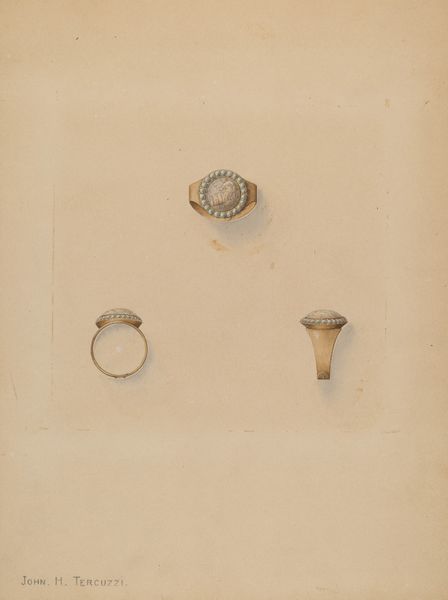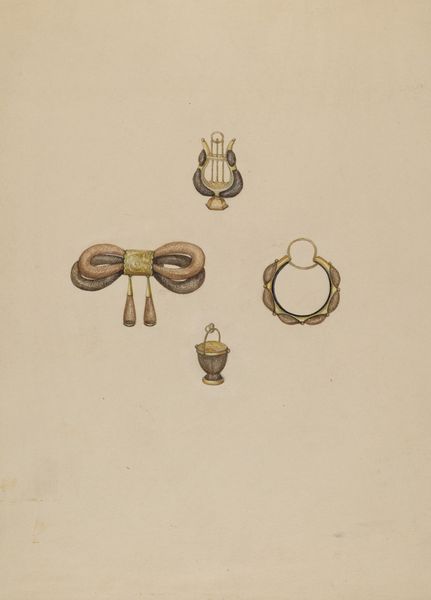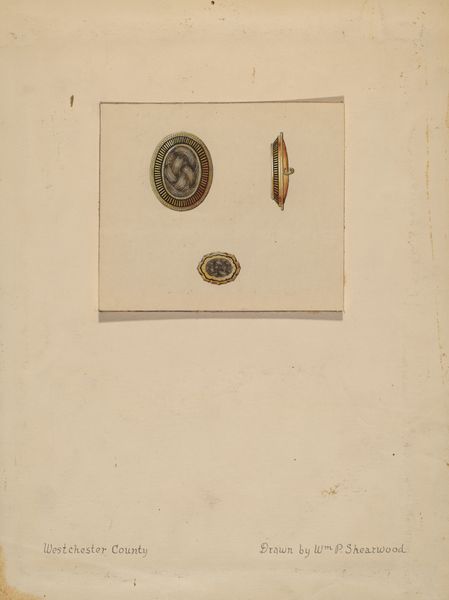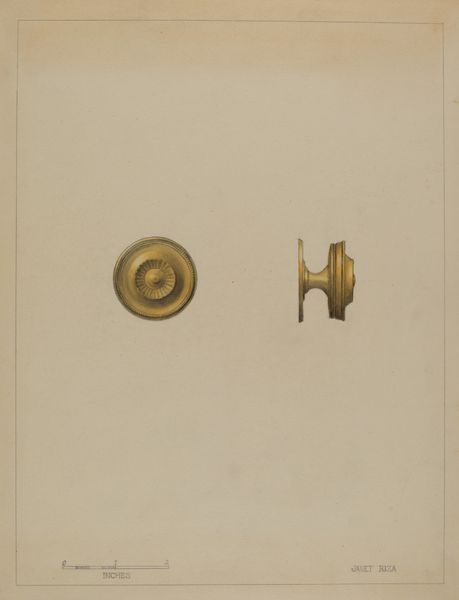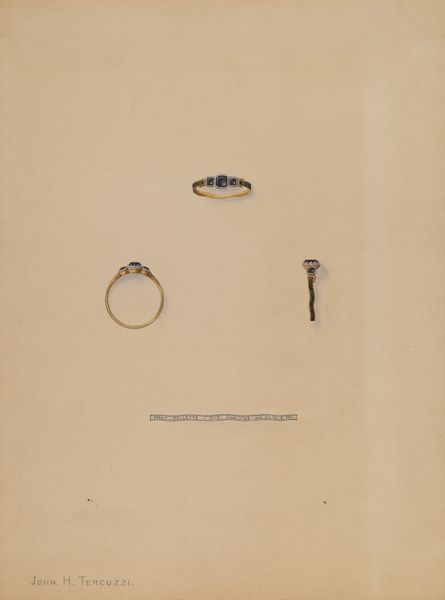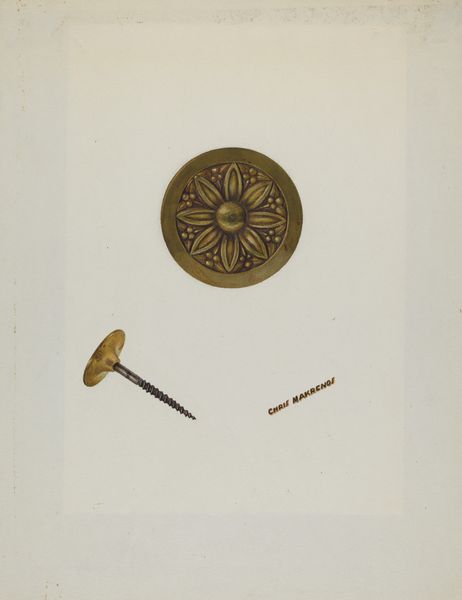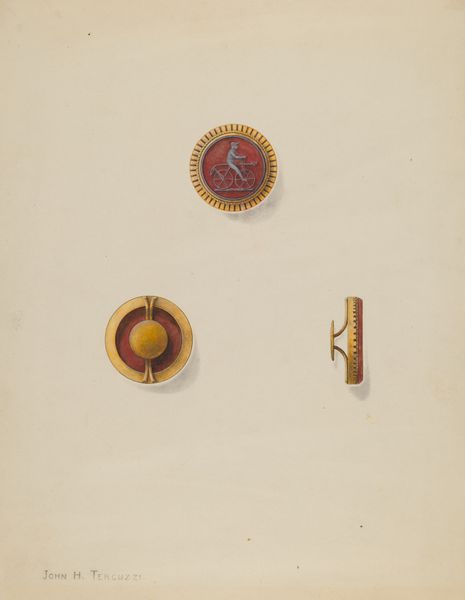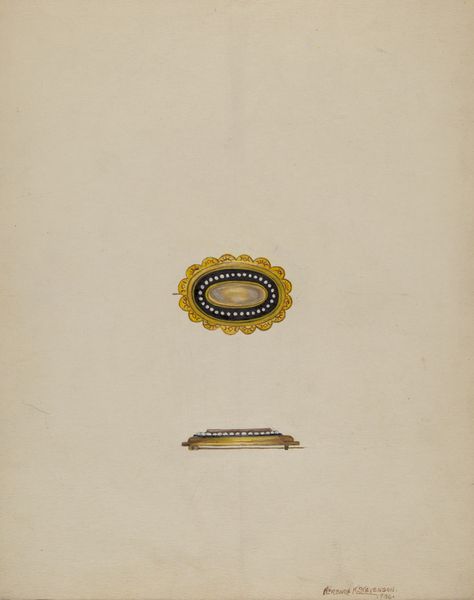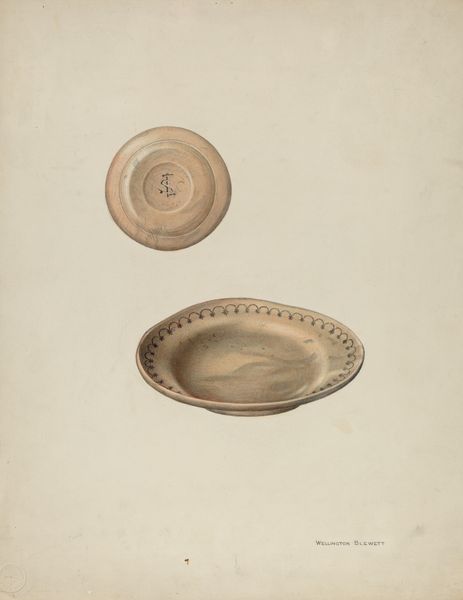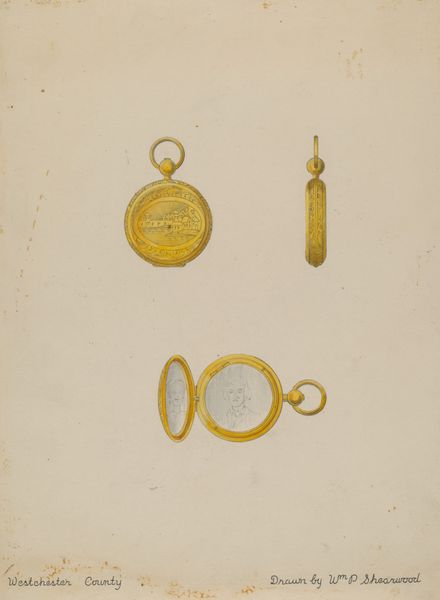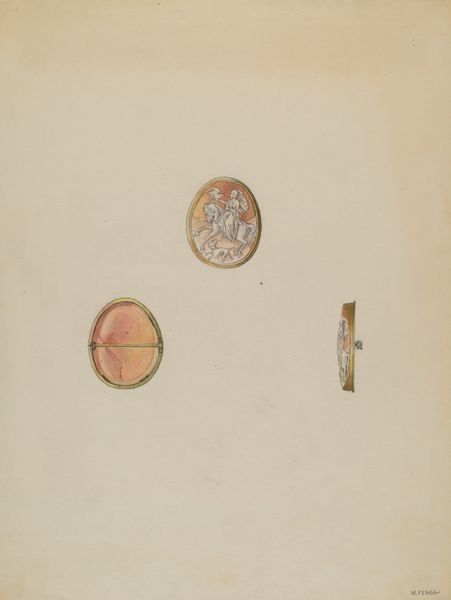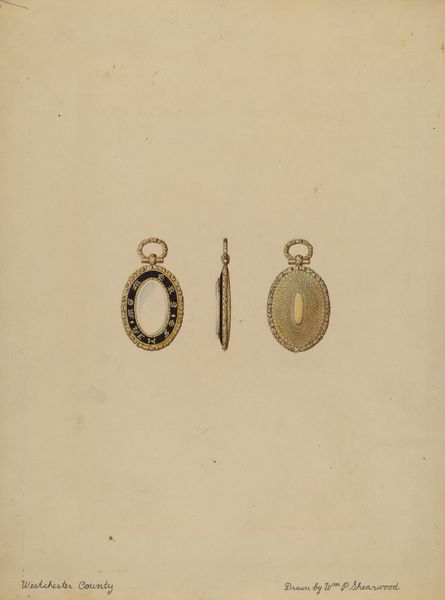
drawing, mixed-media
#
portrait
#
drawing
#
mixed-media
#
sculpture
#
ceramic
#
watercolor
Dimensions: overall: 16.5 x 14.8 cm (6 1/2 x 5 13/16 in.)
Copyright: National Gallery of Art: CC0 1.0
Curator: At first glance, this drawing is surprisingly unsettling; it evokes a sense of delicate unease. The rendering of what I believe is meant to be beautiful jewelry strikes me as almost clinical. Editor: That's a perceptive reading. This mixed media drawing is titled "Hair Ring," dating from around 1937 and credited to John H. Tercuzzi. Rings incorporating human hair were fashionable in the 19th century. Consider that background in assessing the implications of its revival decades later. Curator: Right, the Victorians! Sentimental jewelry using hair was a huge signifier of love and remembrance, sometimes mourning. Given that, doesn't Tercuzzi’s rather flat and emotionally detached representation clash intensely with the historical function and associated values? Editor: Absolutely. Tercuzzi’s professional background adds a layer, too. He worked for Raymond Yard, a highly esteemed jeweler favored by the wealthy and famous, throughout the '30s and '40s. Yard specialized in incredibly high-end custom creations. I see "Hair Ring" less as personal expression and more like a detailed sales illustration meant to cater to a clientele with very specific and even conservative desires. Curator: That framework gives so much more to this seemingly quiet drawing! Are we to consider this a form of early product advertising? What's striking, and admittedly ironic, is that in divorcing it from the body that would be its ultimate recipient, there's a curious kind of objectivity, which in turn makes us focus on what such an intimate thing would symbolize. Was this ring, adorned with somebody’s literal hair, meant as a display of personal agency for its recipient, or the person they memorialize by incorporating their physical traces? Editor: It's a good question, because Tercuzzi was designing jewelry at a time of incredible transformation for American women. Entering the workforce in record numbers, enjoying newly gained, if limited, social freedoms: his work represents this larger shift. How women wore jewelry and how that was publicized—through design drawings and glossy advertisements—helped form a modern aesthetic, one that arguably redefined the role and significance of jewelry itself. It would then signal status more overtly. Curator: It does seem we’re left more with questions than answers. Editor: Precisely. This drawing provides a snapshot into a rapidly changing society, and the visual codes were shifting too. The drawing invites you to reflect on the role personal adornment played, and perhaps still plays, in the construction and communication of social identity.
Comments
No comments
Be the first to comment and join the conversation on the ultimate creative platform.
